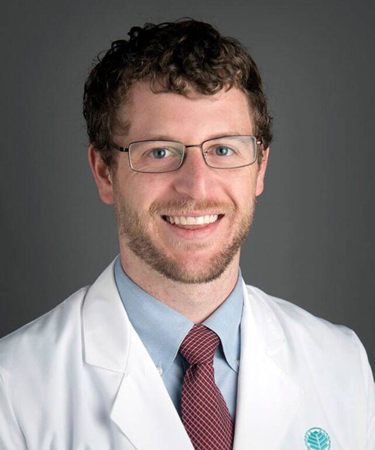Monday February 10, 2020 –
Friday February 14, 2020
8:00am-12:15pm
Event Details
When
Where
Lido Beach Resort
Sarasota, Florida
Event Code
SEMLA-3420200210
Course Topics
Day 1
Thrombolysis for Stroke.
Upon completion of this session, the participant should be able to: GL, COMP
- Analyze and integrate the principles and pathophysiology of stroke and stroke treatment.
- Appraise the applicable medical literature that is available to the clinician along with the latest ASA Guidelines.
- Debate the performance of thrombolysis for stroke to this point in time.
- Appraise the controversy in the medical literature regarding this therapy.
- Determine emerging technologies and therapies that may prove useful for the treatment of stroke in the ED.
PE and DVT in the Emergency Department.
Upon completion of this session, the participant should be able to: EBM, GL, COMP
- Analyze the scope of the problem of thromboembolic disease in the ED.
- Employ the latest diagnostic algorithms and adjuncts available to aid the clinician in the diagnosis of thromboembolic disease.
- Appraise the evidence-based treatment of thromboembolic disease based on the latest applicable literature and apply applicable ACEP Guidelines.
- Assess the limitations of current diagnostic modalities for these diseases.
Aortic Emergencies.
Upon completion of this session, the participant should be able to: COMP,EBM
- Specify the pathophysiology and clinical presentations, and formulate ED management using evidence-based medicine of the following:
- Abdominal aortic aneurysm,
- Traumatic aortic disruption,
- Essentials of aortic dissection.
Trauma in Pregnancy.
Upon completion of this session, the participant should be able to: COMP
- Illustrate the anatomic & physiologic changes of pregnancy that are relevant to traumatic injury.
- Describe the common injuries associated with trauma in pregnancy, as well as their initial assessment and management.
- Discuss practice management variation that may be necessary in the evaluation and management of the pregnant traumatized patient.
Day 2
Nephrolithiasis & Pyelonephritis.
Upon completion of this session, the participant should be able to: COMP, GL, EBM
- Illustrate the pathophysiology and clinical presentation of these two entities.
- Specify the best-evidence strategy in both imaging for diagnosis of nephrolithiasis and management of this pathology in the Emergency Department.
- Discuss the classifications of upper urinary tract infections and pyelonephritis, as current IDSA guidelines for treatment of these classifications.
Urogenital Emergencies: Torsion & Priapism.
Upon completion of this session, the participant should be able to: COMP, GL
- Describe the anatomy, physiology and epidemiology of priapism and torsion.
- Discuss the evaluation and potential causes of both high and low flow priapism.
- Discuss ED management considerations and guidelines for the treatment of priapism.
- Describe the evaluation and bedside reduction technique for testicular torsion, including recent clinical decision tools and transfer recommendations.
Early Goal Directed Therapy in Sepsis: Why All the Fuss?
Upon completion of this session, the participant should be able to: GL, COMP
- Determine the pathophysiology of sepsis and the sepsis syndrome.
- Evaluate the scope of the problem regarding effective management of sepsis in the ED.
- Appraise the principles of early goal-directed therapy in the treatment of sepsis.
- Employ the applicable “surviving sepsis” guidelines.
- Assess the potential gains that can be realized, as well as the pitfalls to avoid, in the management of sepsis utilizing early goal directed therapy.
Minor Closed Head Injury: An Evidence-Based Approach.
Upon completion of this session, the participant should be able to: EBM, GL, COMP
- Assess and relate the pathophysiology of minor closed head injury.
- Appraise the literature as it pertains to minor closed head injury and apply ACEP Guidelines as they relate to minor CHI.
- Recommend diagnostic algorithms appropriate for the evaluation and management of minor CHI in light of best-evidence available.
Day 3
Pericarditis and Myocarditis: How Can 2 Diseases Sound So Similar and Act So Differently?
Upon completion of this session, the participant should be able to: EBM, COMP
- Illustrate the pathophysiology and clinical presentation of these two entities.
- Differentiate the potential pitfalls in the diagnosis and management of these diseases.
- Analyze the commonalities and differences of these closely related diseases.
- Recommend evidence-based work-up and treatment options for pericarditis and myocarditis.
Acute Coronary Syndrome in the ED: So Many Drugs and So Little Time.
Upon completion of this session, the participant should be able to: EBM, GL, COMP
- Analyze the scope of the problem of ACS in the ED.
- Integrate the evidence-based treatment of ACS based on the latest applicable literature.
- Relate the areas of controversy in the treatment of this disease entity.
- Assess emerging therapies that may prove useful for the treatment of ACS in the ED.
- Apply and integrate the updated ACC/AHA guidelines for the management of patients with unstable angina and non ST-segment elevation myocardial infarction.
GI Bleeds: Upper & Lower.
Upon completion of this session, the participant should be able to: COMP,EBM
- Describe the gastrointestinal tract anatomy and pathophysiologic changes that result in presentation with bleeding.
- Determine the emergency department “essentials” for the assessment of the patient with GI bleeding.
- Develop a rational framework for the ED treatment of acute gastrointestinal bleeding, both upper and lower using evidence-based medicine.
Trauma Airways.
Upon completion of this session, the participant should be able to: COMP,EBM
- Specify and apply critical issues in the evaluation and management of the airway in the critically injured patient using evidence-based medicine.
- Identify the potential pitfalls in traditional methods of airway management in the critically injured patient.
- Discuss the potential utility of various pharmacologic agents in obtaining airway access in trauma.
- Demonstrate an understanding of surgical airway management, both open and percutaneous approaches.
Day 4
Post-Arrest Care.
Upon completion of this session, using evidence-based medicine and clinical practice guidelines, to in the AHA CPR and emergency cardiovascular care, the participant should be able to: COMP,EBM
- Develop goals for oxygenation and ventilation in the patient with return of spontaneous circulation following cardiac arrest.
- Identify the optimal mean arterial blood pressure in post-arrest patients.
- Employ appropriate use of targeted temperature management in post-arrest patients.
- Determine which post-arrest patients should be sent for emergent cardiac catheterization.
Deadly Allergies and Anaphylaxis.
Upon completion of this session, the participant should be able to: COMP,EBM
- Determine the clinical criteria for anaphylaxis using The World Allergy Organization guidelines.
- Appraise the use of epinephrine in patients with anaphylaxis using evidence-based medicine.
- Assess the role of second-line medications commonly used in the treatment of anaphylaxis.
- Specify which patients with anaphylaxis require continued observation or admission.
Pediatric Orthopedic Pearls and Pitfalls.
Pediatric orthopedic injuries are frequently seen in the Emergency Department. This population is at risk for missed or mis-managed orthopedic injuries based on inability to provide a history, presence of growth plates and ossification centers, and the imbalance of stronger ligaments and pliable bone. Upon completion of this session, the participant should be able to: EBM, COMP
- Determine the presence of, and apply the evidence-based treatment for Salter-Harris injuries.
- Formulate strategies to avoid the missed diagnosis of pediatric supracondylar humeral fractures.
- Integrate effective methods to avoid the missed diagnosis of slipped-capital-femoral epiphysis and employ the acute treatment algorithm once it is identified.
Adult Orthopedic Pearls and Pitfalls.
Orthopedic injuries are a frequently seen complaint in the Emergency Department. The vast majority are straightforward to diagnose and manage. There are some injuries, however, that are subtler in presentation and more complicated to manage. This session will focus on the latter group of injuries. Upon completion of this session, the participant should be able to: EBM, COMP
- Detect the presentation and diagnostic pitfalls associated with posterior shoulder dislocation.
- Determine an appropriate work-up of compartment syndrome and distinguish the myriad ways it can present.
- Appraise those at risk for knee dislocation and relate the time-imperative for reduction.
- Demonstrate understanding of the work-up and evidence-based treatment for native hip dislocation, as well as occult hip fracture.
Day 5
Community Acquired Methicillin Resistant Staphylococcus aureus (CA-MRSA): An Update.
Upon completion of this session, the participant should be able to: EBM, COMP
- Assess risk factors for CA-MRSA infection.
- Specify the best-evidence management of skin and soft-tissue infections in the era of drug resistance.
- Assess both pharmacologic and non-pharmacologic management strategies for this disease entity.
- Demonstrate familiarity with the latest treatment recommendations for CA-MRSA as directed by the CDC.
Low Back Pain in the ED: What We Know, What We Think We Know, and What We Don’t Know.
Upon completion of this session, the participant should be able to: EBM, COMP
- Apply an evidence-based approach to the evaluation of non-traumatic back pain.
- Differentiate the “red flags” that should heighten the suspicion for serious pathology in the evaluation of back pain.
- Assess and differentiate both effective as well as disproved therapies in the treatment of back pain using the Cochrane Database.
- Specify potential pitfalls in the treatment and disposition of low back pain.
Recent Critical Care Articles You’ve Got to Know!
Upon completion of this session, the participant should be able to: COMP,EBM
- Appraise key evidence-based medicine articles from the recent critical care and emergency medicine literature.
- Plan the integration of recent evidence into the practice of emergency medicine.
Undifferentiated Shock…Making a Difference.
Upon completion of this session, the participant should be able to: COMP, EBM
- Identify crucial pearls from the history and physical examination that identify patients who may be critically ill.
- Discuss important initial management steps for the patient with signs of shock according to evidence-based medicine.
Implement a systematic approach to quickly identifying the cause of shock in critically ill patients.
Learning Objectives
About the Venue
Lido Beach Resort
Sarasota, Florida
Nestled on a private white sand beach on Florida’s Gulf Coast, Lido Beach Resort offers a serene escape with picturesque views, two heated pools, and resort amenities perfect for romantic getaways, family vacations, and peaceful retreats.
Things to Do
Sarasota, Florida
Sarasota offers a truly impressive blend of shopping, cuisine, and attractions. So sail into a breathtaking sunset, golf on lush green fairways, explore St. Armands Circle, or just relax and sink your toes into some of the finest sand in the world.
White sand beaches
21 Zagat-rated restaurants
MLB spring training
Museums, theaters, and festivals
Dozens of golf courses
Presented By

Andrew Perron, MD, FACEP, FACSM
Professor of Emergency Medicine, Tufts University School of Medicine; Portland, ME

Michael Winters
Professor of Emergency Medicine and Medicine; Vice Chair for Clinical and Administrative Affairs, Department of Emergency Medicine, University of Maryland School of Medicine, Baltimore, MD

Bryant Allen
Assistant Professor; Assistant Program Director, Emergency Medicine Residency Program, Carolinas Medical Center, Department of Emergency Medicine, Charlotte, NC
Accreditation
Cancellation & Refund Policy
We understand that plans may change. Please review our cancellation and transfer options below:
30+ Days Before Conference Start Date
- Refund: Full refund minus a $50 processing fee.
- Transfer: Registrations can be transferred once, at no cost, to another conference within two years. Alternatively, registration may be placed “on hold” for up to 12 months, allowing participants to choose a suitable conference for transfer within that period.
Less Than 30 Days Before Conference Start Date
- Refund: No refunds available.
- Transfer: Registration may be transferred to another conference within 2 years at no cost. Alternatively, registration may be placed “on hold” for up to 12 months, allowing participants to choose a suitable conference for transfer within that period.
Additional Notes
- No-shows are non-refundable and non-transferable.
- If we cancel a conference, you may choose a full refund or transfer to another event.
On-Demand Courses
- All sales are final. No refunds or transfers.
Invitation Letters
If American Medical Seminars issued you an Invitation Letter to attend a CME conference in the United States and you need to cancel your registration, we will only refund 50% your registration fee. This is to cover the cost of your Invitation Letter and processing costs. By registering, you agree to the non refundable portion of the registration.
Disclaimer
In the event that AMS is required to cancel a live conference, registrants will receive a full refund within 7 business days. AMS is not responsible for charges associated with cancelled flights or hotel rooms.
How to Request a Cancellation or Transfer
Requests must be submitted in writing to mail@ams4cme.com or by calling 1-800-267-4263.
Note: By registering, you agree to this policy.


